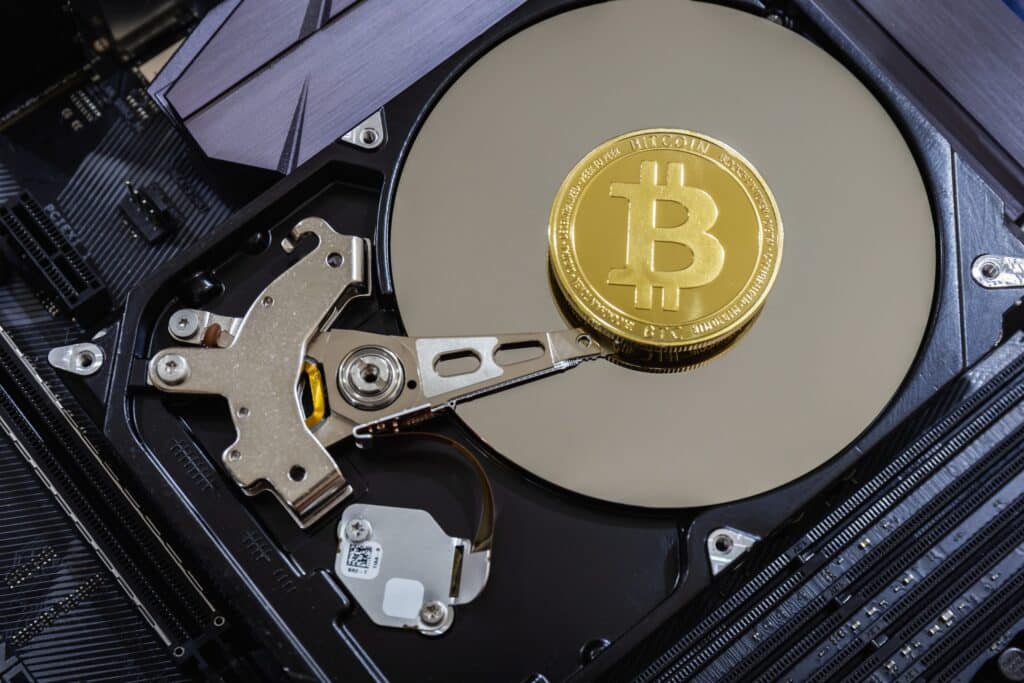Getting cryptos back, impossible?
Getting cryptos back, but how, that is mostly the question of crypto fraud victims.
In principle, crypto transfers confirmed in the blockchain cannot be reversed. However, there are exceptions and ways to get back the money you thought you had lost.
Centralised or decentralised cryptocurrency
In order to answer this question, a distinction must first be made between a centralised and decentralised cryptocurrency.
For example, a direct refund for central cryptocurrencies such as Tether (USDT) - should fraud be proven - can often be realised relatively easily. This usually requires proof of origin of the cryptocurrency, such as the original deposit information of the crypto exchange.
It is also necessary for the further tracking of cryptocurrencies to be documented in a legally correct manner. This is important for Tether, for example, in order to destroy the stolen cryptocurrencies or to make restitution possible in the first place.
Finally, it is also necessary to document the fraud by means of a communication history. In most cases, the cryptocurrencies are then virtually frozen until the incident is resolved. The probability of successfully recovering the funds is high in this case.
With decentralised cryptocurrencies, an immediate refund is not easily possible. Decentralised here means that the blockchain cannot be manipulated.
The procedure for recovering lost decentralised cryptocurrencies is similar to that for centralised cryptocurrencies, but focuses on crypto exchanges. Once the cryptocurrencies have been localised, the wallets are reported. Many crypto exchanges are guided by such reports (AML) and then require the affected wallet owners, for example, to undergo a more stringent KYC check or provide proof of origin for the assets before the funds are transferred or exchanged.
Crypto retrieval often fails due to the authorities
Once the police have been notified, the public prosecutor's office can confiscate the assets from the crypto exchanges concerned, which usually cooperate. As already mentioned, this requires legally correct tracking and localisation of the cryptocurrencies.
Unfortunately, the investigation by the law enforcement authorities is very slow due to capacity utilisation. However, the time factor plays a decisive role in the investigation and seizure of assets. As things stand at present, the investigation and localisation of assets in fraud cases by law enforcement authorities is virtually non-existent.
The authorities usually stop the investigation or postpone it for years. For understandable reasons, trained personnel are preferably deployed in money laundering, tax evasion and terrorist financing cases in order to conserve resources. Unfortunately, the limited capacity of law enforcement authorities and the very time-consuming nature of crypto forensics often mean that private investors cannot be prioritised sufficiently.
On the basis of a forensic report, the public prosecutor's office can force crypto exchanges, which generally cooperate with the EU anyway, to hand over the funds.
Private investors who are victims of fraud should be careful when choosing legal assistance and obtaining a forensic expert opinion. Victims' helplessness is often exploited and exorbitantly high prices are charged, even by supposedly reputable providers.
Challenges and aggravating factors
Tracing the original transactions is becoming increasingly difficult due to the growing number of swaps, bridges and 2-layer chains. However, modern software and forensic methods make it possible to trace the funds beyond doubt in the vast majority of cases.
Fraudsters often use false identities on crypto exchanges or use wallets without KYC regulations. However, modern heuristic analyses can often be used to determine information such as IP addresses, super cookies or device information of the perpetrators.
The owner of the assets usually changes, as the fraudsters generally favour cash in the short and medium term. This change of ownership complicates the tracking and confiscation of cryptocurrencies.
From a legal perspective, however, the assets were already stolen at the time of the exchange. The lost cryptocurrencies must therefore be treated as stolen goods, and victims of fraud still have a right to them even if they have already (unlawfully) changed hands.
The question of how many cases of stolen cryptocurrencies can be recovered as a percentage cannot be answered in general terms due to their complexity. The time factor is crucial and has a direct impact on the chances. In most cases, it is tedious but possible to recover the assets or part of them.
Where can I get help?

For those affected by crypto fraud, qualified advice from crypto forensics experts, such as the Krypto Investigation GmbHas well as by experienced lawyers.

Dr Rogert from the law firm Rogert & Ulbrich Attorneys at Law in Partnership mbB has already successfully supported numerous clients in dealing with crypto fraud cases.
FAQs – Frequently Asked Questions about Cryptocurrency Recovery
Is it even possible to recover lost cryptocurrencies?
Yes, in many cases it is possible to recover money from crypto fraud – especially if transactions, wallets, and communication histories are documented early on. Modern forensics can often clearly trace lost assets.
What should I do first if I have become a victim of cryptocurrency fraud?
Act quickly: Document all transactions, save chats and screenshots, and contact specialized experts. The first steps often determine whether funds can be recovered later.
How do centralized and decentralized cryptocurrencies differ in terms of recovery?
With centralized cryptocurrencies like USDT, investment fraud can be mitigated through the issuers – sometimes even by freezing the coins. Decentralized crypto assets – such as Bitcoin – require technical tracking via wallets and exchanges.
How can a lawyer help in cases of cryptocurrency fraud?
A specialized lawyer can handle the legal aspects, set deadlines, apply for disclosure orders, and coordinate cooperation with stock exchanges or authorities – especially important when perpetrators use international structures.
Why do authorities often fail to seize cryptocurrencies in time?
Law enforcement is overburdened and has little capacity for complex crypto fraud investigations. Many cases are closed or delayed for years while fraudsters continue to move assets.
Can modern forensic methods really help to track stolen cryptocurrencies?
Yes. Heuristic analyses can often clearly trace wallet connections, IP addresses, device information, and the movements of perpetrators – even if they try to cover their tracks.
What happens if my cryptocurrencies were moved via bridges or Layer-2 chains?
Even then, tracking is possible. Even complex routes can be reconstructed using professional analysis software, so assets can often be recovered.
Can I get my Bitcoin back if it has been moved between multiple wallets?
In many cases, yes – if action is taken early enough. Even if Bitcoin has been transferred multiple times, the chain of transactions is traceable on the blockchain.
What can I do if I've been lied to by a supposed broker or coach?
These fraudsters often operate internationally. Seek immediate advice and check whether the platform is part of a known investment scam. Many victims are still able to recover their funds through forensic analysis and legal action.
Where can I get professional help if I have lost cryptocurrencies?
Crypto Investigation GmbH and experienced partner law firms support you in recovering stolen assets. They combine technical crypto forensics with legal expertise to help victims even in difficult cases.


